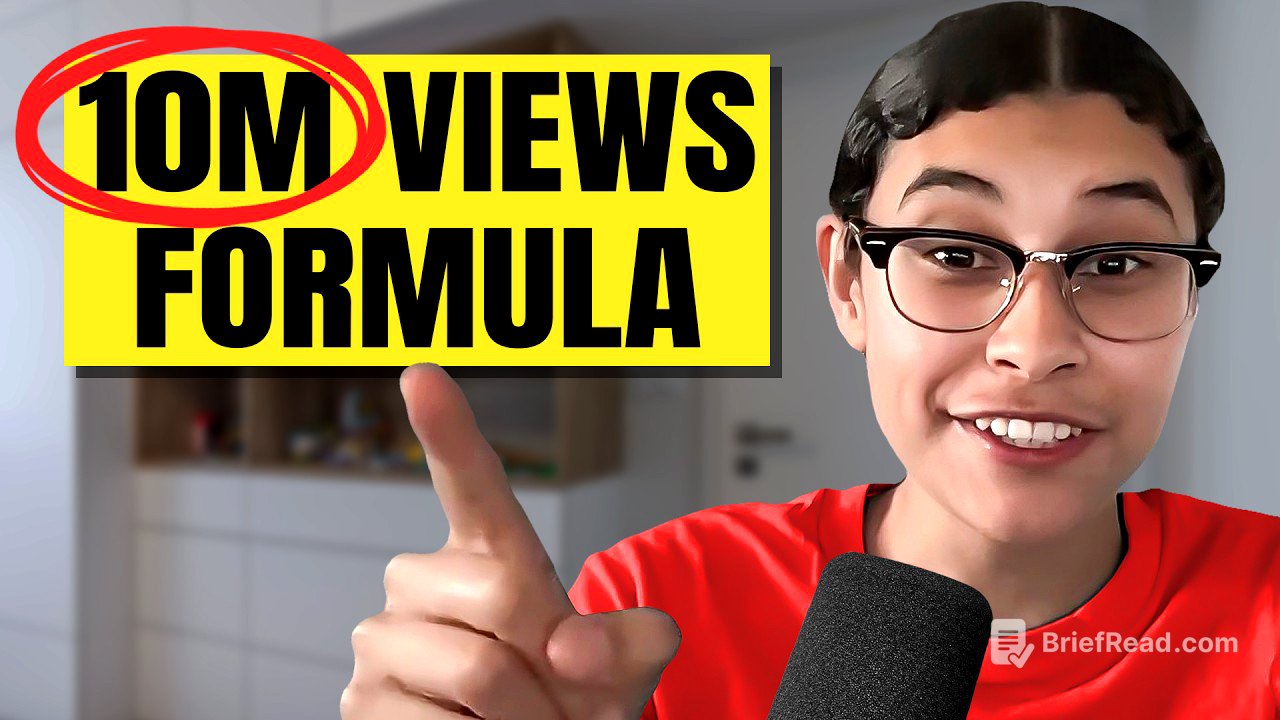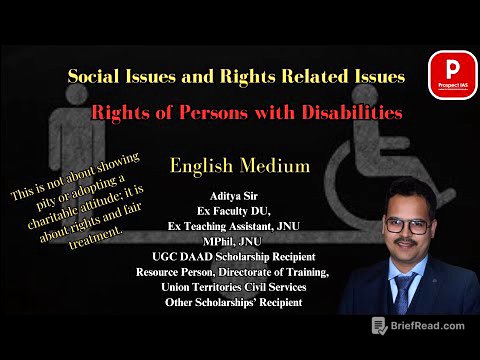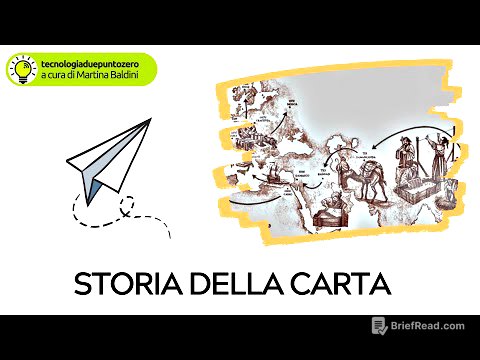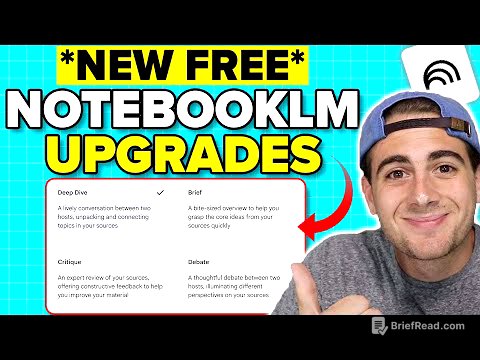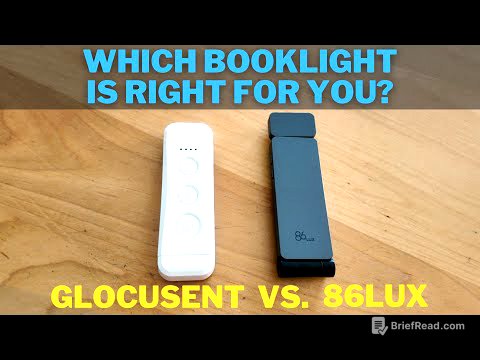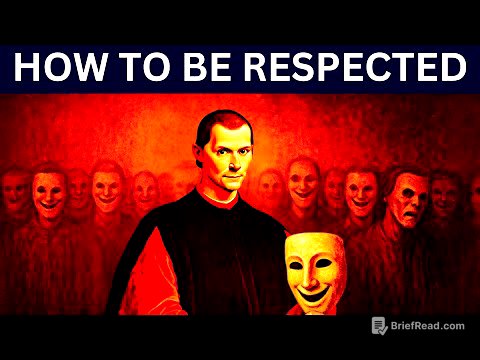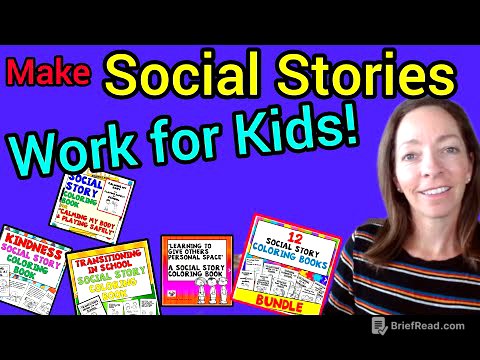TLDR;
This video features Jenny Hoyos, a successful YouTube Shorts creator, who shares her strategies for creating high-performing Shorts. She emphasises treating YouTube as a business, finding a unique angle (blue ocean strategy), crafting compelling hooks, mastering storytelling techniques, understanding audience analytics, and leveraging Shorts for monetisation and building a loyal audience. Jenny also discusses strategies for converting Shorts viewers to long-form content.
- Treat YouTube like a business with scheduled content.
- Find a unique angle to stand out from the competition.
- Use concise, visually appealing hooks that foreshadow the video's content.
- Employ storytelling techniques like "but and so" and dual narratives.
- Analyse audience retention graphs to understand what resonates.
- Create repeatable content formats ("buckets") to build returning viewership.
- Monetise Shorts through sponsorships and products, not just AdSense.
- Convert Shorts viewers to long-form content by creating similar-feeling videos.
Treating YouTube Like a Business [0:44]
Jenny Hoyos emphasises the importance of treating a YouTube channel like a business. This involves maintaining a consistent schedule, ensuring content is planned and scheduled in advance, and consistently posting high-quality videos. For Jenny, this means posting a video every Saturday at 10:00 a.m. EST. She focuses on balancing quality with quantity to maintain a consistent upload schedule while ensuring the content remains engaging.
Finding Your Blue Ocean [1:35]
Jenny discusses the "blue ocean" strategy, which involves finding a unique angle or twist to differentiate yourself from the competition. She initially copied Graham Stefan's style but realised it was a "red ocean" because many others were doing the same. Jenny identified a gap in the market by creating finance content for kids, leveraging her unique background and experiences to make the content relatable to a younger audience.
Crafting Effective Hooks [2:52]
A good hook should be concise (no more than 3 seconds), visually appealing, and understandable even on mute. Composition should be centred and framed with no more than three objects in the frame, making it suitable for use as a thumbnail. Foreshadowing is crucial, hinting at what to expect at the end of the video to encourage viewers to watch until the end. For example, starting a video by showing a reaction to a gift without revealing what the gift is until the end.
Storytelling Techniques for Shorts [4:24]
Jenny shares storytelling frameworks, starting with the "but and so" technique, which involves setting up a conflict and then resolving it, creating a more engaging narrative. She also uses dual narrative storytelling, where one story is told through the voiceover and another through the visuals. This allows her to convey multiple messages within the short time frame of a Short.
Structure and Pacing [6:29]
Jenny recommends a structure of quick hook, medium-paced middle, a peak (like a funny joke), back to medium pacing, and a quick ending. This creates a roller coaster of emotions, aligning with the peak-end theory, which suggests people remember the best part and the ending of a video. It's important to be concise rather than talking fast, delivering value and context efficiently and allowing the audience time to process the information.
Understanding Your Audience [7:51]
To understand audience preferences, Jenny suggests sending videos to a target audience member for feedback. Analysing the retention graph (rather than just the percentage) is crucial to identify which parts of the video resonated and where viewers dropped off. She also looks at older videos that are still performing well to understand what content to recreate and what resonates with her audience.
Building Loyalty with Repeatable Formats [9:17]
Jenny uses "buckets," which are repeatable content formats with similar titles and structures. This helps YouTube understand what viewers are likely to watch next, increasing returning viewership. By keeping the structure, format, and metadata consistent, YouTube can easily link related videos, encouraging viewers to watch more content.
Monetising Shorts [10:35]
While AdSense revenue on Shorts may be low, Jenny believes Shorts creators can make as much money as long-form creators through sponsorships and products. She earns between $5,000 to $10,000 per month in AdSense revenue from Shorts, but knows creators who make millions through sponsored Shorts. Being business-minded is key to leveraging Shorts for monetisation.
Converting Shorts Viewers to Long-Form Content [11:51]
Jenny advises treating Shorts and long-form content as two different games. Her strategy for converting Shorts viewers to long-form is to create similar-feeling content, essentially creating a series of 30-second Shorts that add up to an 8-minute video. While getting Shorts viewers to watch long-form videos is challenging, Jenny has found that her top-performing long-form videos are from returning viewers, and retention is high when linking long-form videos from Shorts.
